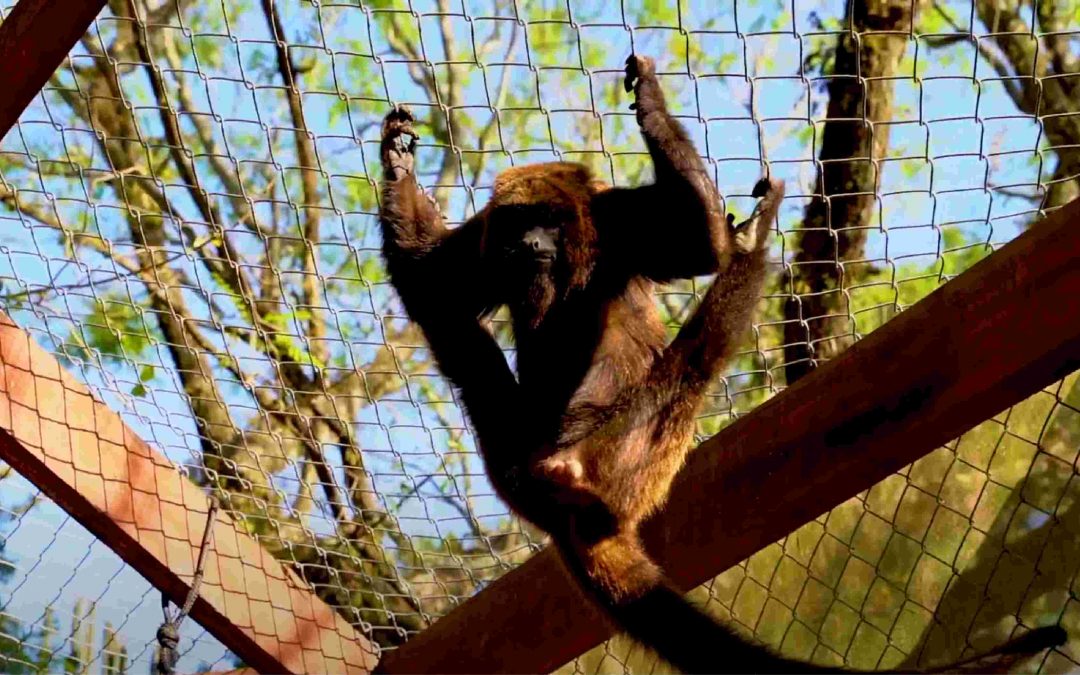When identifying an irregular situation related to wildlife, it is possible to report anonymously or not anonymously. How to do it?
If you are suspicious of animal trafficking, please contact IBAMA’s Green Line, dialing 0800 61 8080. Convey the information and ask for help as to what you should do.
If you witness animal trafficking, it is important to register as much information as possible, such as where the action took place, license plate of vehicles involved, characteristics of buyers and/or sellers, description of animals, etc.
If you spot lost or endangered wild or exotic animals, it is important to contact the departments in charge to ensure that rescue and capture are made properly. Important: never try to rescue these animals on your own.
In Brazil, birds are the main target of wild animal trafficking, and are accountable for 80% of species smuggled in the black market. This market moves approx. R$ 3 billion, right after arms and drugs traffick according to the Federal Police marshal Franco Perazzoni, who specializes in environmental combat and crimes.
According to him, birds lead the preference of traffickers, 90% of which are passerine birds. They are on the top of the list for their beauty and singing, and therefore species such as bullfinches, saffron finches, double collar seedeaters, green-winged saltators, parrots, sun parakeets, budgies and macaws represent 6% of the rescued birds and the remainder add up to 4% of rescues.
Brazil is one of the main targets for wildlife traffickers due to the country’s immense biodiversity. Traffickers move billions of dollars all over the world, and place wild animals’ illegal trade as the third largest illicit activity in the world, after arms and drugs traffic.
In the state of São Paulo only, police seize approximately 50 THOUSAND animals yearly. Part of these animals are taken to CRAS (Wildlife Recovery Center), where approx. 12 THOUSAND animals circulate every year.
Most of the animals die right after being removed from their environment. Most of these deaths already happen during transportation, which takes place under ruthless conditions: animals are drugged up on medicine (or not) and are stashed in bags, pipes, bottles or small cages, inside car trunks.
Those that survive transportation eventually die in captivity, for not adapting to life without freedom or for not being treated properly.
Aside from cruelty, wildlife traffick can contribute to species extinction. Moreover, very often trafficked animals are acquired as “pets” and abandoned shortly after by their tutors for lack of knowledge on how to raise them.
Due to its immense biodiversity, Brazil is one of the main targets for wildlife trafficking. These traffickers move billions of Dollars all over the world, placing wild fauna illegal trade as the third largest illicit activity in the world, only behind drugs and arms traffick.
Capture takes place in areas of great biodiversity, namely the Northern and Northeast Region and the Pantanal. The main capture areas are located in the states of Maranhao, Bahia, Mato Grosso do Sul, Mato Grosso, Goias, Tocantins, Minas Gerais and the Amazon Region. After that, animals circulate among several intermediaries until reaching the large traders in the Rio-São Paulo axis.
The largest sales volumes take place in these capital cities. Animals’ destination varies. Many are illegally sold in fairs, others are sent to breeders and breeding sites. If exported their destination is usually Asia, Europe or the United States.
Yearly, approximately 35 million wild animals are trafficked and illegally sold in Brazil. Nine of every 10 trafficked animals die before reaching end destination. Can you imagine how many puppies are dying daily in the hands of smugglers? These animals leave the country and cross borders hidden in suitcases and bags, right past our police, totally doped, anaesthetized and most probably already dead due to abuse!
At #InstitutoRaquelMachado we have a couple of cubs; one of them was brought to us by someone who said that the cubs were alone in the woods. We immediately notified the environmental authorities.
Most probably, mother wolf was looking for food when the person went by and saw the lonely wolfies. Even if with the best of intentions, the passerby did not take the correct action.
You will find here some guidance if you happen to find wild puppies alone in the woods:
Do not approach.
The animal mother could be nearby and be aggressive trying to protect her young.
Do not touch the animals.
No matter how cute puppies might be, they are wild animals and could hurt you. People smell in the young animals could cause abandonment.
Leave everything as it is.
Also make sure that other people, pets, vehicles or machinery do not approach – the bigger the chances will be that the mother animal will come back and take her young to a safer place.
Notify the relevant environmental agency.
0800 61 8080 Ibama
This is the best help you can give to a lone wild animal in the wilderness.

